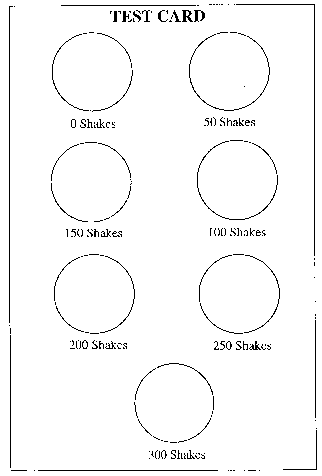Grade 5-8 Performance Task
Contributed by: New York State Education Department (NYSED)
NYS Alternative Assessment in Science Project (1996)
Credit/Source: Rock Recipe: Ted Anderson; Pembroke High School
Earth Science Supplement (1970) - Rock Abrasion
Description:
Students will shake a box containing Plaster of
Paris "rocks", gravel, and sand, to measure the effects
of erosion.
This task assesses students' abilities to make simple
observations, describe observed changes, make predictions of change
using observations and a model, and representing direct relationships
using line graphs.
This task is designed to take students approximately
30 minutes to complete.
Overall Task Content Area:
Earth Science
Specific Knowledge Areas:
Structure of the earth system
Performance Expectations:
- conducting investigations
- gathering, organizing, and representing data
- formulating conclusions from investigational data
- applying scientific principles to develop explanations and solve
new problems
National Science Education Standards:
8 A SI 1: Abilities necessary to do scientific
inquiry
1.4 Develop descriptions, explanations, predictions,
and models using evidence. Students should base their explanation
on what they observed, and as they develop cognitive skills, they
should be able to differentiate explanation from description — providing
causes for effects and establishing relationships based on evidence
and logical argument. This standards requires a subject knowledge
base so the students can effectively conduct investigations, because
developing explanations establishes connections between the content
of science and the contexts within which students develop new knowledge.
1.5 Think critically and logically to make the relationships
between evidence and explanations. Thinking critically about evidence
includes deciding what evidence should be used and accounting for
anomalous data. Specifically, students should be able to review
data from a simple experiment, summarize the data, and form a logical
argument about the cause-and-effect relationships in the experiment.
Students should begin to state some explanations in terms of the
relationship between two or more variables.
1.8 Use mathematics in all aspects of scientific inquiry.
Mathematics is essential to asking and answering questions about
the natural world. Mathematics can be used to ask questions; to
gather, organize, and present data; and to structure convincing
explanations.
8 D ESS 1: Structure of the Earth System
1.3 Land forms are the result of a combination of constructive
and destructive forces. Constructive forces include crustal deformation,
volcanic eruption, and deposition of sediment, while destructive
forces include weathering and erosion.
(Use the "hot" link on the PALS home page
to check the full text of related National Science Education Standards,
if desired.)
National Council of Teachers of Mathematics:
Algebra (AL1): Understand patterns, relations and functions.
Problem Solvign (PS2): Solve problems that arise in mathematics
and in other contexts.
General Instructions to the Teacher:
This task is designed to take students approximately 30 minutes
to complete.
Students will be working individually during this exercise.
Students should be ready to work as soon as the period begins.
The materials should be set out at each lab station, if possible.
A central supply area, if needed, should be easily accessible. All
supplies should be clearly labeled.
Materials for "Changing Rocks":
The teacher will need:
- 1-5 lb bag of Plaster of Paris
- 500 ml of fine gravel
- 500 ml sand
- 2 or 3 aluminum (13" x 9") trays
- water - to mix
- hammer (to break up the rocks into smaller pieces
- bucket to mix plaster
- laminated test card
- newspaper
- small baggies or plastic containers
At this station students should have:
- 10 rocks
- 1 plastic jar (recommended large mouth peanut butter jars)
- water
- laminated test card
- plastic spoon (to remove rocks from jar)
- paper towels
- metric ruler
Advance Preparation:
***Rocks should be prepared two (2) days prior to the test. ***
- Mix: plaster, sand, gravel, water to a pudding consistency.
- Pour into tray to height of 2-3 cm (1"); shake down so
that it dries flat.
- When dried, place on newspaper and break into equal chunks of
about 2-3 cm in size.
- Sort out 10 "rocks" (per student) of similar size
and place in a baggie.
- Recommendation - laminated/plastic covered test card be taped
down at the student test station.
- Check plastic jars for leaks - use only plastic jars to shake.
Safety:
- Be careful.
- Teachers and students should always exercise appropriate safety
precautions and utilize appropriate laboratory safety procedures
and equipment when working on science performance tasks.
Extensions/Modifications:
- Depending on availability of materials, use different actual
rock materials.
- Data may be collected as a team and individual analysis may
be done.
Credit/Source:
Rock Recipe: Ted Anderson; Pembroke High School.
Earth Science Supplement (1970) - Rock Abrasion.

|


